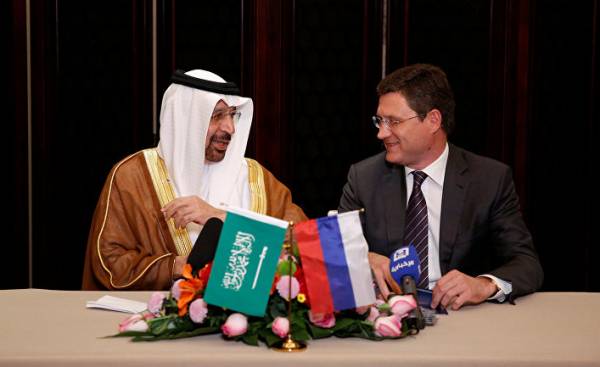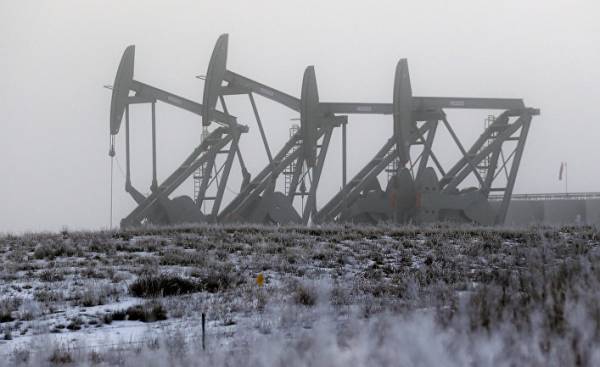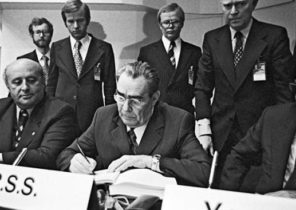
Investors who bet on increasing oil production, did not imagine that OPEC will decide to extend the agreement to reduce production. After the conclusion of the agreement prices decreased by 5%, thereby was the largest daily price drop since last March. While such a reaction from the markets is unexpected, because the signing of the agreement expected within a few weeks. The price of Brent crude fell $ 2.50 to of 51.46 per barrel, approximately the same (2.46 USD) has fallen in price futures for oil of the American mark WTI, reaching $ 48,90 per barrel. Is this only a temporary phenomenon that will end soon? Or are we waiting for an even greater fall in oil prices in the coming days?
Last Thursday, the OPEC and independent oil producers led by Russia decided to extend the agreement to reduce oil production in the nine months to March 2018. This step is another attempt to counteract the overproduction of oil resulting in lower oil prices in half, the sharp decline in revenues over the past three years after previous restrictions by OPEC contributed to the return of oil prices to the level above $ 50 per barrel this year.
Before talking about the factors that will determine future price change in the next few days, we need to know why the new decision of OPEC to reduce oil production contrary to the expectations of investors. The market expected that the oil-producing States only at the last minute decide to go even more reduction of oil production or to extend the agreement for a further period up to mid-2018, which never happened. The response was unnatural reaction — the same thing happened with the US dollar after the recent rise in interest rates. At that time, investors had certain expectations about US policy regarding the exchange rate, observers expected the fed President Janet Yellen will maintain a policy of austerity and increase the interest rate, which led to the weakening of the U.S. currency, while should lead to growth of its cost.
Experts in the oil sector say that the problem is not that the agreement was reached, and that it was achieved much earlier. As noted by the representative of the consulting company Energy Aspects Amrita sen, OPEC overreached, trying to attach great importance to the oil-producing countries, and the agreement was made prematurely for the market.
If the extension of the agreement on 9 months of best solution?
The Minister of energy of Saudi Arabia Khalid al-Faleh said that according to all indicators, the renewal term of the agreement, nine months is the optimum: “We discussed several scenarios, six, nine and twelve months, in the course of the discussion were presented and options means a much larger reduction in production.” Trying to calm the markets, the Minister expressed confidence that prices will rise and called the slump in prices that followed the adoption of the agreement is purely technical.
 © REUTERS, Aly Optimists of energy of Saudi Arabia Khalid al-Faleh, and the Minister of energy of Russia Alexander Novak
© REUTERS, Aly Optimists of energy of Saudi Arabia Khalid al-Faleh, and the Minister of energy of Russia Alexander Novak
Completely opposite feelings experienced investors. They were disappointed as the agreement reached in Vienna, on the extension of the reduction in production of 1.8 million barrels per day, was not sufficient, step for traders, as they hoped that the agreement will be extended to 12 months or more. This is the second agreement on the reduction of oil production over the past ten years, was first signed in December 2016. However, investors believe that the downturn in world oil production 2% is not sufficient to support prices in light of the continuing oversupply of oil.
On the other hand, Gary Ross, who was the head of PIRA Energy Group (analytical division of S&P Global Platts), argues that the upcoming elections in Russia, as well as sale of shares in a Saudi company Aramco next year, which will force Moscow to Riyadh to take steps to support oil prices. This explains the statement of the Minister of energy of Russia Alexander Novak about the fact that perhaps in the course of the meeting, the members of the monitoring Committee that monitors implementation of the agreement on the reduction of oil production between OPEC and independent producers, will consider the possibility of amending the text of the agreement, which means that both countries are determined to support prices.
Novak noted that to hold a meeting at any time, but in accordance with the plan, the Committee meets every two months, and explained that those clauses which referred to the extension thereof, may be amended at any meeting of the Committee. At the same time, two sources in oil sector told Reuters that the Minister of energy of Saudi Arabia al-Faleh will visit Russia this week. This message confirms the opinion of those who believe that in the near future the parties will take steps to support the oil market.
There are 3 factors that will determine the fate of oil prices in the near future
Despite the fact that OPEC and independent oil producers that signed the agreement account for a large part of the market, oil prices are determined by other factors. As excess supply led to lower prices in recent years, the same effect may occur in connection with a change in demand. However, the demand is not controlled by OPEC and independent oil producers, while China is the most important player in this region, and the US also have a big impact on the supply of oil. You need to consider that the United States increase oil production, and what the oil reserves are in the state. All this is of great importance, and perhaps these factors will determine the change in oil prices in the near future.
1. Shale oil
The success of OPEC in reducing oil production depends largely on the United States, which the agreement did not participate. So, starting in mid-2016, the US increased oil production by 10% to more than 9.3 million barrels a day, thus approaching the level of oil production in Russia and Saudi Arabia. These countries are the biggest competitors, and strive to occupy the leading position in the global market. The rise in oil prices this year prompted the United States to increase production of shale oil, thus preventing the restoration of balance in the market, while oil reserves remain overcrowded.
 © AP Photo Brennan LinsleyДобыча gas by means of fracking in Colorado
© AP Photo Brennan LinsleyДобыча gas by means of fracking in Colorado
Thus, OPEC countries face a dilemma. On the one hand they need high prices, and prices must not reach too high level, because in this case it would compel the United States (the largest oil consumer in the world) to increase shale oil production. Ryan Seaton, a representative of the Committee on rail transport in Texas, which regulates the huge oil sector of Texas, said in an interview with Reuters, that the reduction of oil production by OPEC countries is an opportunity for the energy sector in the US, as it will allow the country to sell oil worldwide. “It will help us to achieve dominance in the energy sector,” said Seaton. It is expected that the reduction in the production countries which have signed the agreement will lead to the acceleration of oil production in shale fields the US, because American companies can operate at a much lower cost.
Last week the American company has increased the number of oil rigs, although in may, the growth rate slowed down in connection with the reduction of overall growth and reached the lowest level since October of 2016 due to low oil prices. However, the extension of the agreement on the reduction of oil production will further increase in the number of oil rigs. According to representatives of the oil and gas service company Baker Hughes, the U.S. oil producers added two rigs to drill wells for a week (until may 26), bringing the total number of rigs has reached 722, i.e., the highest level since April 2015.
The figures indicate the unprecedented growth of shale oil production, as the current rig count is more than the number in the corresponding week of last year, when the number of existing units was only 316. The increase in the number of oil rigs going for 19 straight weeks, which also broke the previous record. Then the period of continuous increase in the number of towers was completed in August 2011, according to Baker Hughes.
For its part, the Agency Fitch States that shale oil will remain an important factor in the long term. The Agency warns that the world may again face a glut of crude in 2018, if the agreement will not be extended again. Despite the stunning growth of shale oil in the United States, it is expected that the average annual price of oil Brent this year will probably stay at 50-55 dollars per barrel.
© US Energy Information AdministrationСхема shale gas
“We must coexist” — this phrase, uttered by al-Faleh earlier, is the question of the possibility of coexistence between OPEC and shale oil. Is it unlikely? Would such a course to conflict in the near future? Before answering these questions, you need to understand that shale oil production — a factor that cannot be ignored. Against him you need to choose the approach, whether it is coexistence or conflict.
There is no doubt that the relationship between OPEC and the shale industry in the United States have changed significantly since then, in 2012, there was the so-called shale revolution. However, OPEC has not developed a clear policy on this issue. As stated by the oil Minister of Nigeria Emmanuel Cacique: “We are disappointed with the actions of the producers of shale oil, the purpose of which is to strike at the market, so OPEC needs to meet again to discuss what we should do.” These countries take? The answer to this question will be given in the coming days.
2. Oil reserves
“We observed a significant reduction of oil reserves, so in the fourth quarter, we will achieve our goal”, — such statement was made by Minister of energy of Saudi Arabia. In addition, Fitch believes that despite the agreement reached by the OPEC agreement will lead to the reduction of crude oil reserves, countries should take measures to preserve oil prices at the level at which they are from the beginning of the year. According to the Agency, the market recovery will be gradual, so that the price of Brent crude will be at $ 50 per barrel in 2018 and about $ 60 in 2019.
The energy information administration of the U.S. Department of energy said that crude oil inventories in the U.S. fell last week in connection with the increase in production of oil refineries also decreased gasoline supplies. According to the office on may 19, the oil reserves of the country declined by 4.4 million barrels, while data analysts indicate that last week, the reserves decreased by 2.4 million barrels and gasoline stocks decreased by 787 thousand barrels. The analysts in the Reuters poll had forecast a decrease of 1.2 million barrels.
 © AP Photo, Eric Gay, FileДобыча of oil in North Dakota
© AP Photo, Eric Gay, FileДобыча of oil in North Dakota
Of course, low inventory levels has a positive effect on oil prices, but how long the oil reserves should be reduced to the price of oil reached a high enough level? The figures indicate that the reserves of consuming countries amount to three billion barrels to 300 million barrels higher than the average for the last five years. While OPEC expects reserves to fall to 2.7 billion barrels at the end of 2017, other experts are forecasting a surplus for a longer period, according to some, until 2019.
The reduction of oil reserves, remains one of the main objectives of OPEC, but it didn’t succeed. The results of the study Alliance Bernstein, an agreement by OPEC will lead to an accelerated reduction in oil reserves during the second half of 2017, and in 2018 it will slow down. It will take 11 months, which exceeds the period for which the agreement has been extended. Therefore, it is likely that the agreement will have to renew again.
3. China
In the future, energy will not depend on oil production. That is the opinion of experts in this field. A larger value will have no oil production and demand. Experts believe that this is directly related to the Chinese economy, because China can revive or leave the oil market. What choice he will make depends on what will happen to China’s economy, the second largest economy in the world that has a huge impact on the oil market.
Helima Croft, a major oil analyst from Royal Bank of Canada believes that the agreement by OPEC puts huge pressure on the oil market because there are many factors outside the control of OPEC. First and foremost is the role of China, which in recent times has not been given due attention in the midst of all the chaos resulting from discussions about shale oil. At the same time, a well-known analyst Jason Schenker of Prestige Economics said: “If you want to know where the danger is, it comes not from the agreement of OPEC and not of the restoration of balance in the world oil reserves. China — that’s who is the source of the greatest anxiety.”
On the other hand Chinese independent refineries are already saturated with oil, they satisfy domestic demand, and the pace of oil purchases in at least the next two months will decline. Thus, the demand from the largest oil importer in the world is of great concern to producers because he has already declined from 9.2 million barrels per day in March to 8.4 million barrels per day in April.
As a result, Chinese oil refineries are under pressure, while their profit reduced due to tight fiscal policy of China. As the Director of the refining company in Duneane, the expected closure of many factories in June and July and possibly in August, which is due not only to seasonal factors, but also to the fact that the market is not in the best situation, but the oil reserves are overcrowded.
Perhaps by the end of the fourth quarter of this year we will see a clearer picture and understand whether the current OPEC steps are sufficient or it is necessary to exert much more effort. However, it is safe to say that it is difficult to balance the market, not giving much attention to the above factors.







